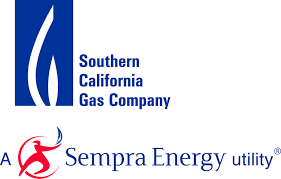SoCalGas Deploys Sensors to Detect Methane and Enhance Public Safety

Southern California Gas Company (SoCalGas) has completed demonstration testing of new gas detection sensors employing its Advanced Meter communication system as part of its overall pipeline safety efforts. The sensors can detect natural gas leaks quickly near natural gas pipelines and serves as an extra measure to improve the safety of SoCalGas’ system.
SoCalGas installed 12 sensors at monitoring stations that are reading methane-in-air concentration levels at various locations in the Los Angeles basin. These sensors read concentration levels every 5 minutes and allow SoCalGas to measure and monitor natural gas levels near high-pressure pipelines. The sensors detect methane in the air and send an alarm within 15 minutes to a monitoring system. The sensors will detect natural gas at well below the limit that most people can by sense of smell, providing earlier detection of any unplanned gas escape incidents and more rapid dispatch of responders to investigate.
The sensors are solar-powered and supplemented by battery. Each unit is contained in a small cabinet that can be attached either to an existing SoCalGas pole, wall or other structure.
The sensors have operated and performed as expected for nearly one year, and no excessive methane levels have been detected at the sensor locations. However, SoCalGas continues to periodically test and calibrate the sensors to confirm they are operating correctly.
“We’re very pleased with the progress of this program over the last year,” said Deanna Haines, director of gas engineering for SoCalGas. “As far as we know, no other natural gas utility has implemented a similar methane detection pilot program. Wider use of methane detectors will enhance public safety.”
The commercially-available methane sensors employed for this test are safe – they use non-dispersive infrared (NDIR) sensor technology that has been in use for many years. But SoCalGas is not limited to existing sensor technology.
This testing had a larger purpose – to give SoCalGas another credible technology option for enhancing pipeline safety. The company can use its Advanced Meter radio system to help record and transmit data from sensors stationed along its pipelines to improve methane detection capability.
If SoCalGas receives timely approval to proceed from the California Public Utilities Commission, the company will begin wide deployment of methane sensors in 2018. The current plan calls for installation of approximately 2,000 sensors.
The methane sensors were tested as part of SoCalGas’ Pipeline Safety Enhancement Plan (PSEP), the program that identifies various pipeline sections throughout SoCalGas’ system and slates them to be pressure-tested or replaced. Begun in 2014, PSEP also includes provisions to upgrade, replace or retrofit hundreds of mainline valves in the system with technology that allows them to be opened or closed remotely by system operators from a central control location, or that automatically shuts off the flow of natural gas in the event of a large pressure drop.
SoCalGas dedicates significant resources to improving the safety and integrity of its more than 101,000 miles of natural gas pipelines. In 2016, the company plans to spend approximately $1.2 billion for improvements to distribution, transmission and storage systems and for pipeline safety.
Related News
Related News

- Keystone Oil Pipeline Resumes Operations After Temporary Shutdown
- Biden Administration Buys Oil for Emergency Reserve Above Target Price
- Freeport LNG Plant Runs Near Zero Consumption for Fifth Day
- Enbridge to Invest $500 Million in Pipeline Assets, Including Expansion of 850-Mile Gray Oak Pipeline
- Williams Delays Louisiana Pipeline Project Amid Dispute with Competitor Energy Transfer
- Evacuation Technologies to Reduce Methane Releases During Pigging
- Editor’s Notebook: Nord Stream’s $20 Billion Question
- Enbridge Receives Approval to Begin Service on Louisiana Venice Gas Pipeline Project
- Russian LNG Unfazed By U.S. Sanctions
- Biden Administration Buys Oil for Emergency Reserve Above Target Price




Comments